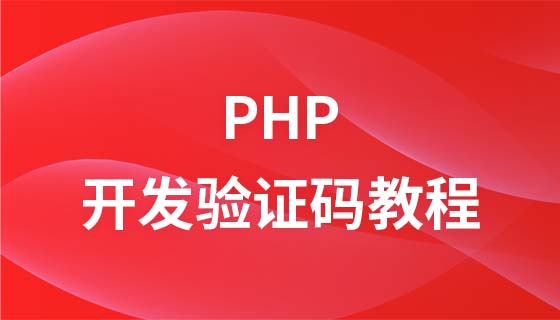Other information about verification code in PHP development verification code tutorial
Verification codes generally prevent batch registration, which is difficult for the human eye, let alone a machine. Erxiang Baidu Tieba requires you to enter a verification code when posting without becoming a member of the bar, probably to prevent large-scale anonymous replies. Currently, many websites use verification code technology to prevent users from using robots to automatically register, log in, and spam. The so-called verification code is to generate a picture from a series of randomly generated numbers or symbols, and add some interference to the picture, such as randomly drawing a few straight lines and drawing some dots (to prevent OCR), and the user can identify the verification code information with the naked eye. Enter the form to submit for website verification. A certain function can only be used after successful verification.
Generally, you must enter the verification code wherever you register your user ID and in all major forums
Common verification code:
(1) Four digits and letters may be alphabets or numbers, random 4 -digit string, the most primitive verification code, and the verification effect is almost zero. CSDN website users use GIF format to log in, and commonly used random digital picture verification codes. The characters on the picture are quite satisfactory, and the verification effect is better than the previous one.
(2) Chinese characters are the current latest verification code registered. It is randomly generated and it is difficult to play. For example, the QQ appeal page.
(3) The hotmail of MS is in the BMP format, random figures+random capital English letters+random interference pixels+random positions.
(4) Korean or Japanese, now running HF MS registration is to play Korean, which increases difficulty.
(5) Google’s Gmail registration is in JPG format, random English letters + random colors + random positions + random lengths.
(6) Other major forums are in XBM format, with random content.
(7) Advertising verification code: Enter part of the content in the advertisement. The characteristic is that it can bring additional income to the website, and it can also make users refreshed.
(8) Question verification code: The question verification code is mainly filled in in the form of question and answer. It is easier to identify and enter than the modular verification code. The system can generate questions such as "1+2=?" for users to answer. Of course, such questions are randomly generated. Another type of question verification code is a text-based question verification code, such as generating the question "What is the full name of China?" Of course, some websites also provide prompt answers or direct answers after the question
4 .Other functions of the verification code:
Prevent malicious registration
Almost all formal forums require the verification code to be entered during registration. This is to prevent people who spam advertisements from using registration machines to register maliciously . This invention originated from Carnegie Mellon University in the United States is called CAPTCHA (fully automated Turing test for distinguishing humans and computers), because registrants need to identify the messy text on the picture, and this task Only a true human can accomplish it. There are hundreds of millions of Internet users around the world. For an individual, the few seconds it takes to identify text are insignificant, but if the power of all Internet users is harnessed, unimaginable and huge projects can be completed, and this is what the United States That's what a CMU research team in Pittsburgh, Pennsylvania, is doing.
This group is entrusted by a non -profit organization called the "Internet Archives" to convert a large amount of ancient books and manuscripts through OCR (optical character recognition) software to electronic text to facilitate computer storage and query . However, due to the poor quality of the original manuscript, the poor computer would misread one word for every ten words it scanned. The only solution was manual verification, and such work was obviously not capable of being done by one person or a group. Therefore, CMU designed a powerful system called reCAPTCHA to allow their computers to ask humans for help. The specific method is to send scanned text images that cannot be recognized by OCR software to major websites around the world to replace the original verification code images; after users of those websites correctly identify these words, their answers will be sent back to CMU.
In order to improve the accuracy of user recognition, they are often required to identify two words, and one of the answers has been known. In this way, a user who correctly identifies the word with the answer is likely to also correctly identify the other word. Sometimes, CMU will also submit an unrecognized word to different users. If they get the same answer, then the answer is definitely correct.
Due to many popular websites, such as Facebook, Twitter, and Stumbleupon, they all use recaltcha. The CMU can handle about one million words every day. However, at the current rate, it is estimated that it will take 400 years to digitize all the texts provided by the Internet Archive.














